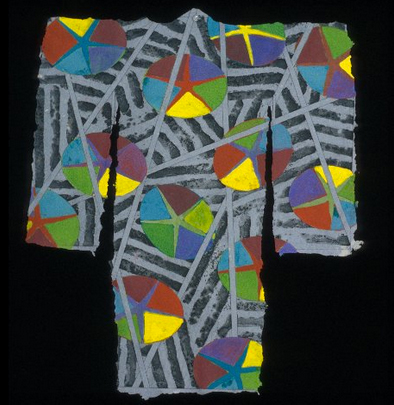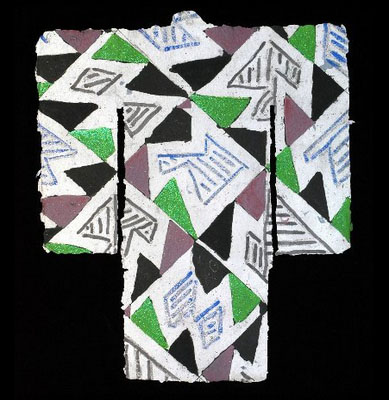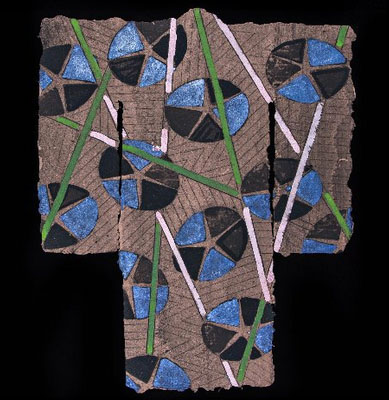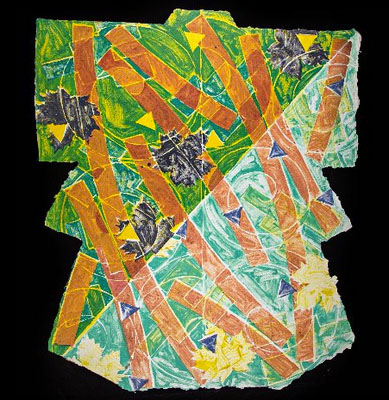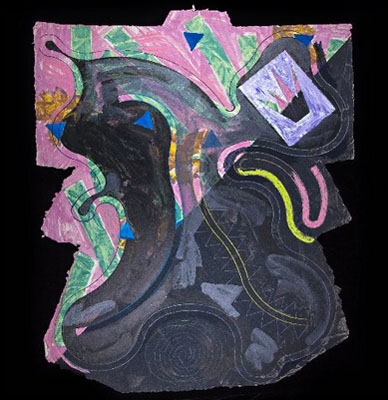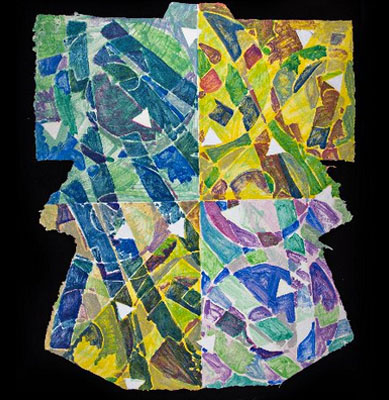Kimonos on Paper
Sandy Kinnee
July 2022
The original intent, in selecting the kimono shape, was to use a non -Western shaped motif as a format for my prints. I had already employed fan shapes. Kimonos seemed like a very logical step.
My first kimonos were a series of one hundred variations on a simple motif. I had appropriated a very famous and recognizable Japanese Noh costume and reduced it to its graphic essentials. I reduced the scale and made a linear engraving on two abutted zinc plates. I made four hundred sheets of paper in two basic forms, the right and left body/verticals and right and left extended arms/horizontals. These papers were various colors. Each kimono form was assembled by weaving four sheets together and giving them to an assistant to join on a commercial sewing machine. After assembly, the forms were imprinted using uniquely inked plates. Finally the already varied pieces were handcolored using four pouchoir stencils. The primary goal was to create a series of prints where the ink, paper, and stenciled color changed and the image and format were constant. While each piece could stand on its own, the entire series was to be considered in terms of process.
Shortly after my first showing of the kimono forms, kimonos and kimono inspired artworks seemed to be everywhere. One day my New York dealer called to ask if Miriam Shapiro could have permission to borrow a few of my pieces to take to her studio. While I was flattered, this phone call combined with the proliferation of kimono imagery was enough to make me back off the kimono bandwagon. Kimonos, for me were not about the human form or about designing fabrics or clothing. They were, until that point in time, an untapped shape worthy of use.

